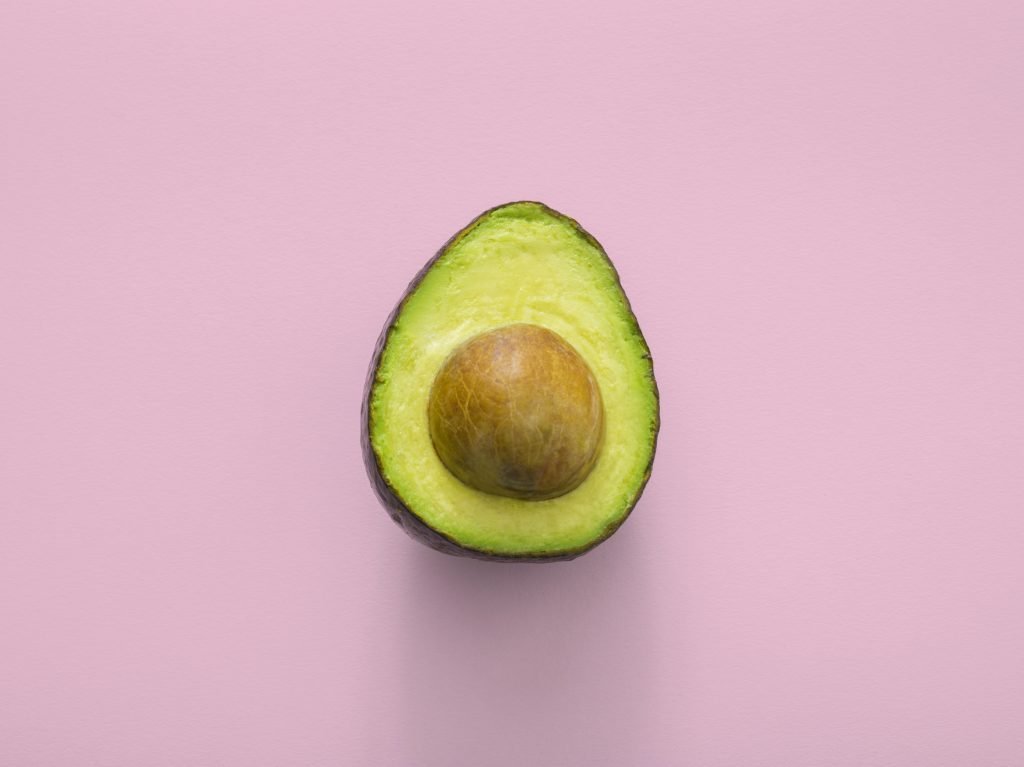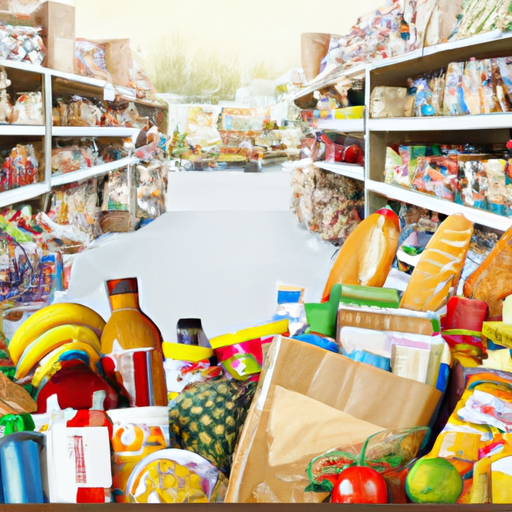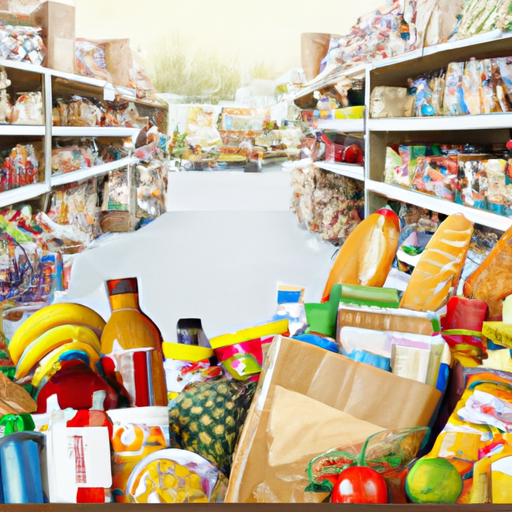You’re all set to start prepping, but you’re not quite sure where to begin. Don’t worry, we’ve got you covered. Introducing “What Should I Buy First When Prepping?” – your ultimate guide to stocking up on the essentials.
From food and water to emergency supplies and survival gear, this article will walk you through the must-haves for any prepper. Whether you’re a seasoned pro or just starting out, get ready to make your prepping journey a whole lot easier. Let’s get started! When it comes to prepping, it’s important to prioritize your purchases based on what will provide the most immediate benefit in an emergency situation. To help you get started, let’s break down the essential items you should consider purchasing in each category.
What Should I Buy First When Prepping? Food
Non-perishable items
Non-perishable items should be at the top of your what should I buy first when prepping list. These are foods that can be stored for long periods without spoiling, making them ideal for emergencies. Stock up on items like canned vegetables, beans, and fruits, as well as jarred peanut butter, pasta, rice, and oatmeal. These pantry staples will ensure you have a variety of options for sustenance during an extended period of isolation or when fresh food becomes scarce.
Canned goods
Canned goods are a crucial component of any emergency food supply. They are not only convenient and easy to store but also retain their nutritional value for an extended period. Consider purchasing canned meats such as tuna or chicken, soups, stews, and canned fruits. These items can be consumed directly from the can or easily heated if desired, providing essential nutrients and calories to keep you fueled during uncertain times.
Dried foods
Dried foods are another excellent addition to your emergency food supply. They have a long shelf life and are lightweight, making them ideal for any bug-out bags or emergency kits. Consider stocking up on dried fruits, jerky, nuts, and powdered milk. These items can be easily incorporated into meals or enjoyed as nutritious snacks, providing you with both sustenance and comfort in unpredictable situations.
Ready-to-eat meals
Ready-to-eat meals, also known as MREs (meals ready-to-eat), are an essential investment for your emergency food supply. These pre-packaged meals can be stored for several years and are designed to provide a complete and balanced meal. They typically include an entrée, sides, snacks, and a dessert, along with the necessary heating elements. MREs are an excellent option for situations where cooking may not be possible, offering convenience and nutrition when you need it most.
What Should I Buy First When Prepping? Water
Bottled water
Water is a vital resource, and it’s crucial to have an ample supply on hand during emergencies. Bottled water is the most convenient option, as it comes in sealed containers and is readily available for consumption. It’s a good idea to have at least one gallon of water per person per day, and aim to store a two-week supply for each family member. Remember to regularly check expiration dates and rotate your water supply to ensure freshness.
Water storage containers
In addition to bottled water, consider investing in water storage containers. These larger containers allow you to store a significant amount of water in a safe and easily accessible manner. Look for containers made from food-grade materials, such as high-density polyethylene (HDPE), and ensure they have a secure lid to prevent contamination. Water storage containers are especially valuable in situations where tap water becomes unsafe or unavailable.
Water purification tablets
Water purification tablets are a must-have for any emergency preparedness kit. These tablets can effectively disinfect water from questionable sources, such as streams or lakes, making it safe for consumption. They work by releasing chemicals, typically chlorine or iodine, that kill bacteria and viruses present in the water. Keep a supply of water purification tablets in your kit to ensure you can make use of available water sources if necessary.

What Should I Buy First When Prepping? First Aid
Bandages
When it comes to first aid, bandages are an essential item to have on hand and definitely one of the first things you should buy when prepping. These adhesive strips can be used to cover wounds, protect them from infection, and promote healing. Stock up on different sizes and types of bandages to cater to various injuries. Additionally, consider purchasing adhesive tape or cohesive bandages for securing dressings or creating makeshift splints.
Antiseptics
Antiseptics play a crucial role in preventing infection in wounds. Common antiseptics include hydrogen peroxide, rubbing alcohol, and povidone-iodine solution. These products can be used to clean wounds or disinfect surfaces, ensuring a hygienic environment and promoting healing. It’s important to have an adequate supply of antiseptics to maintain good hygiene standards during emergency situations.
Medications
In an emergency situation, access to medical care may be limited. Therefore, it’s crucial to stock up on necessary medications and over-the-counter remedies. Depending on your specific needs, consider purchasing pain relievers, antibiotics, antihistamines, and any prescription medications you or your family members may require. Always consult with a medical professional when considering adding prescription medications to your emergency kit.
Medical supplies
Beyond bandages and medications, your first aid kit should include a variety of medical supplies. These may include disposable gloves, tweezers, scissors, sterile gauze, adhesive tape, and a thermometer. It’s important to have the necessary tools to clean and dress wounds, assess vital signs, and provide basic medical care in emergency situations.
What Should I Buy First When Prepping? Communication
Radio
During emergencies, communication is vital for staying informed and coordinating with others. A battery-powered or hand-crank radio is an essential item to have in your emergency kit. These radios allow you to access news updates, emergency broadcasts, and weather reports even if power sources or cell networks are down. Look for a radio that can receive both AM and FM frequencies and consider one with NOAA weather alerts for advanced warning of severe conditions.
Walkie-talkies
Walkie-talkies provide a reliable and efficient means of communication during emergencies, especially in scenarios where cell networks may be compromised. These two-way radios allow you to communicate with others within a specific range, keeping you connected with family members or emergency response teams. Look for walkie-talkies with a long range, clear audio quality, and multiple channels for communication versatility.
Cell phone
While cell phones heavily rely on networks and power sources, they are still valuable tools in emergency situations. Ensure you have a fully charged cell phone as part of your prepping essentials. If possible, invest in a portable charger or solar charger to keep your phone powered in case of a power outage. Additionally, consider downloading relevant emergency apps and storing important contact information on your phone for quick access.
Chargers
Having spare chargers for your electronic devices is crucial, particularly when prolonged power outages occur. Keep backup chargers, such as car chargers or portable power banks, in your emergency kit to ensure you can charge your devices even without access to traditional power outlets. Make sure to periodically check and recharge these backup chargers to keep them ready for emergencies.

What Should I Buy First When Prepping? Lighting
Flashlights
A reliable source of lighting is essential during emergencies, especially during power outages or when moving in dark environments. Flashlights should be part of your essential prep supplies. Opt for LED flashlights, as they are energy-efficient and provide a bright and long-lasting light. Consider having multiple flashlights in different locations throughout your home, along with spare batteries or rechargeable options.
Headlamps
Headlamps offer hands-free illumination, making them invaluable in emergency situations. Whether you need to navigate in the dark, perform tasks, or keep your hands free for safety reasons, a headlamp can be a game-changer. Look for headlamps with adjustable brightness levels and a comfortable strap to ensure a snug fit. It’s a good idea to have headlamps readily accessible in your emergency kit or bug-out bags.
Candles
Candles provide a traditional and reliable source of light during power outages or emergencies. Keep a supply of non-scented candles in your emergency kit, along with matches or lighters. Place candles in stable holders and ensure they are situated in a safe area away from flammable materials. Always practice caution when using candles and never leave them unattended.
Lighter or matches
Having a reliable fire-starting tool is essential in emergency situations, where the ability to create heat and light can be crucial. Include a lighter or waterproof matches in your emergency kit to ensure you have the means to start a fire if needed. These items can come in handy for lighting candles, starting a campfire, or igniting a camping stove for cooking purposes.
What Should I Buy First When Prepping? Shelter
Tent
A sturdy and reliable shelter is a fundamental element of any emergency preparedness plan. A tent provides protection from the elements and creates a designated space for you and your family to seek refuge. Look for a reliable camping tent that is lightweight, easy to set up, and can withstand different weather conditions. Consider the size of your family and opt for a tent with sufficient capacity for everyone.
Sleeping bag
Along with a tent, a quality sleeping bag is crucial for providing warmth and comfort in emergency situations. Choose a sleeping bag that is appropriate for the climate in your area and consider the insulation type and temperature rating. Look for sleeping bags that are compact and lightweight, making them easy to transport and store in your emergency kit.
Emergency blankets
Emergency blankets, also known as space blankets or Mylar blankets, are essential items to have in your emergency supplies. These lightweight and compact blankets provide insulation and reflect body heat, helping to prevent hypothermia in cold conditions. Emergency blankets are waterproof and can be used as makeshift shelters or ground covers. It’s a good idea to have multiple emergency blankets available for each family member.
Tarp
A tarp is a versatile and multi-purpose item that can provide additional protection against the elements. Tarps can be used to create a makeshift roof, windbreak, or ground cover, depending on your specific needs. Look for a durable tarp made from waterproof material and consider having different sizes available to cater to various shelter requirements.

What Should I Buy First When Prepping? Hygiene
Toilet paper
Maintaining proper hygiene is crucial, even during emergencies. Having an ample supply of toilet paper is essential for comfort and sanitation purposes. Consider storing a few extra packages of toilet paper in your emergency kit or stockpile to ensure you won’t run out when access to stores is limited. Additionally, explore alternatives like unscented baby wipes or reusable cloth wipes for extended use.
Soap
Keeping your hands clean is vital for preventing the spread of infections, especially in emergency situations. Stock up on bar soap or liquid hand soap and ensure you have enough supply for proper hand hygiene. Consider opting for antibacterial soap for added protection. In addition to hand soap, it’s also beneficial to have dish soap or multipurpose cleaning agents for general hygiene purposes.
Hand sanitizer
Hand sanitizer is an excellent addition to your emergency hygiene supplies, particularly in situations where water access may be limited. Choose alcohol-based hand sanitizers with a minimum of 60% alcohol content for effective sanitization. Keep travel-sized bottles in your emergency kits, bug-out bags, or readily accessible areas to ensure you can maintain hand hygiene when soap and water are not available.
Feminine hygiene products
It’s essential to consider the specific hygiene needs of all family members when prepping. Stock up on feminine hygiene products such as pads or tampons to ensure the comfort and well-being of individuals who menstruate. Consider purchasing extra supplies and prioritize long-lasting or reusable options to minimize the need for frequent restocking.
What Should I Buy First When Prepping? Tools
Multi-tool
A multi-tool is a versatile tool that combines various functions into one compact device. Investing in a quality multi-tool with features like pliers, screwdrivers, knives, and saws can be incredibly valuable during emergencies. These tools can assist with repairs, cutting through materials, or fulfilling a variety of other needs that may arise.
Knife
A reliable knife is an essential tool for any emergency preparedness kit. A sharp and sturdy knife can be used for countless tasks, including cutting, chopping, and self-defense if necessary. Look for a knife that is durable, easy to handle, and suitable for both outdoor and indoor use. It’s beneficial to have multiple knives in different sizes readily available throughout your emergency supplies.
Duct tape
Duct tape is hailed as the “handyman’s secret weapon” and for good reason. This versatile tape can be used for repairs, securing items, or even creating makeshift tools or shelters. Keep a roll or two of duct tape in your emergency kit to be prepared for various situations. Look for high-quality, waterproof duct tape for maximum durability and effectiveness.
Rope
Having a length of sturdy rope is invaluable in emergency situations. From creating shelters to securing items or performing tasks that require strength and stability, rope can serve numerous purposes. Consider investing in paracord, a lightweight and durable type of rope that has a high weight-bearing capacity. Keep several lengths of rope in different thicknesses in your emergency supplies to be ready for any situation.

What Should I Buy First When Prepping? Cooking
Camp stove
Cooking during emergencies can be challenging, but having a reliable camp stove can make a significant difference. Invest in a portable camping stove that uses a variety of fuel sources, such as propane or butane. Look for stoves that are lightweight, compact, and offer easy ignition and temperature control. Having a camp stove allows you to prepare hot meals and boiling water, ensuring proper nutrition and hydration in emergency situations.
Cookware
In addition to a camp stove, having suitable cookware is crucial for meal preparation during emergencies. Consider investing in lightweight and durable camping cookware sets that include pots, pans, and utensils. Opt for non-stick coatings for easy cleaning and ensure the cookware is compatible with your camp stove or other heating sources. Having a dedicated set of cookware for emergency situations ensures you won’t have to rely on your regular kitchen supplies.
Utensils
Having the right utensils for food preparation and consumption is often overlooked but essential for a well-rounded emergency food supply. Invest in a set of sturdy utensils, including spoons, forks, and knives, that are specifically designated for your emergency kit. Also, consider adding a can opener, bottle opener, and a versatile tool like a spork to maximize functionality and convenience.
Fuel
If you’re using a camp stove or other portable cooking devices, it’s crucial to have an adequate supply of fuel on hand. Consider storing extra fuel canisters, propane tanks, or alternative fuel sources suitable for your specific cooking equipment. It’s always a good idea to have enough fuel to last for an extended period in case access to fresh supplies becomes limited.
What Should I Buy First When Prepping? Personal Protection
Face masks
Face masks have become a crucial item in everyone’s emergency preparedness arsenal, particularly in recent times. Having a supply of disposable or reusable face masks can provide protection against respiratory pathogens, harmful airborne particles, or even smoke during fires. Ensure you have an adequate quantity of face masks for all family members, and regularly rotate them to maintain hygiene and effectiveness.
Gloves
Protecting your hands is essential during emergency situations, especially when dealing with potentially hazardous substances or performing tasks that pose risks of injury. Disposable or reusable gloves should be part of your personal protection gear. Consider having both latex and non-latex options to accommodate possible allergies. Gloves are valuable for preventing the spread of infection and keeping your hands safe in various situations.
Safety goggles
Safety goggles are often overlooked in emergency preparedness, but they play a crucial role in protecting your eyes. Particularly in situations where debris, dust, or chemicals may be present, safety goggles provide an additional layer of safety. Look for goggles that fit comfortably and provide a snug seal around your eyes to prevent any particles from entering. Having a pair of safety goggles readily available can help prevent eye injuries and maintain good vision during emergencies.
Self-defense items
While self-defense items should only be considered if legal and appropriate in your area, they can provide an added sense of security and peace of mind during emergencies. These may include items such as pepper spray, personal alarms, or whistles. Remember to familiarize yourself with the proper use and regulations surrounding self-defense items, and always prioritize personal safety and the safety of others.
In conclusion, the key to effective prepping lies in prioritizing your purchases based on what will provide immediate benefit and ensure your well-being during emergencies. By carefully considering each category, including food, water, first aid, communication, lighting, shelter, hygiene, tools, cooking, and personal protection, you can build a well-rounded and comprehensive emergency preparedness plan. Start with the basics and gradually expand your supplies and knowledge to be prepared for a wide range of potential emergencies. Remember, preparedness is a continual process, so regularly review and update your supplies as needed to stay ready for the unexpected. Stay safe and take proactive steps towards building your emergency preparedness kit today.
